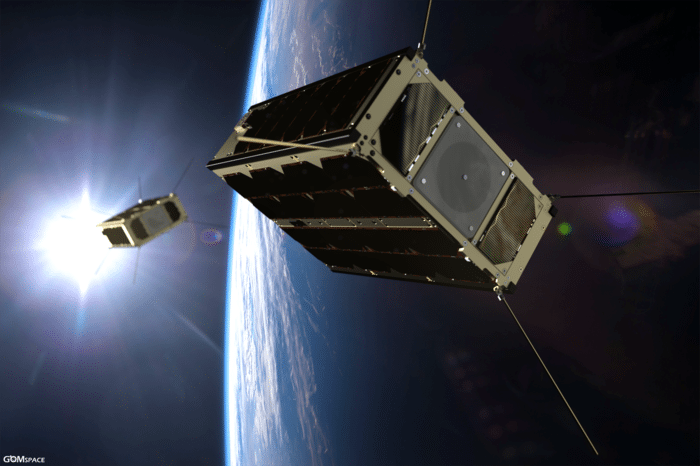ESA’s Next Satellite Propelled by Butane

GomX 4 pair. Photo: GomSpace.
The European Space Agency’s (ESA) next miniature satellite will be its first able to change orbit, the agency announced. Thanks to a compact thruster resembling a butane cigarette lighter, the cereal box-sized satellite will fly around its near-twin to test their radio communications.
Ready to be launched with its counterpart from China on Feb. 2, GomX 4B is built from six standard 10 cm CubeSat units. Much quicker to build and cheaper to launch than traditional satellites, ESA is leveraging CubeSats to test new technologies in space.
The main goal is to test the radio link at varying distances, routing data from one satellite to the other, then down to the ground. GomX 4A, from the Danish Ministry of Defense, will remain in position while ESA’s GomX 4B maneuvers up to 4,500 km away. Supplied by Swedish firm and GomSpace spin-off NanoSpace, the thrusters fitted along one side will allow GomX 4B to adjust its motion by a total of 15 m/s — a speed equivalent to a kicked football.
Each thruster will provide only 1 millinewton — the weight you would feel holding a feather in your hand — but generates enough force to move the 8 kg satellite over time. The thrusters will typically be fired in pairs although they can also work individually for a few minutes at a time and up to an hour.
“We have two pressurized fuel tanks linked to two pairs of thrusters. Rather than burning propellant, these are simpler ‘cold-gas’ thrusters designed specifically for such a small mission. And simpler means cheaper and smaller,” said Tor-Arne Gronland, NanoSpace Chief Executive Officer (CEO). “The fuel is stored under pressure, then released through a tiny rocket nozzle. Even though it’s cold gas, we achieve a substantial velocity change by using liquid butane that turns to gas as it exits. Storing it as a liquid, like in a cigarette lighter, allows us to pack as many butane molecules as possible inside the small available volume — its liquid form being some 1,000 times denser than its gas.”
NanoSpace already has flight experience behind its cold-gas thruster, with a smaller version carried on China’s TW 1 satellite in 2015.
The company plans to demonstrate a different operating methods during the GomX 4B mission: “We’ll do different kinds of burns: long, short, pulsing and throttling up and down. It’s important to do these things early in the mission then again late on, to show it can survive and perform well in space,” Gronland said.
NanoSpace is also developing an ESA thruster for flying several satellites in formation, rendezvous and docking, and for controlling the orientation of CubeSats in deep space.